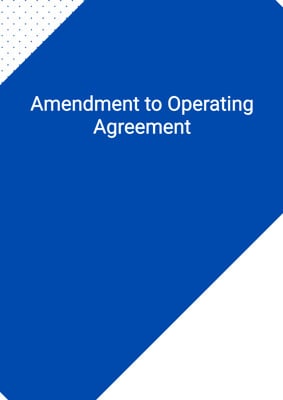How to Tailor the Document for Your Need?
01
Create Document
Fill in the details of the parties. You can click the "Fill with Member’s Information" button to complete it with information saved to your account.
02
Fill Information
Please fill in any additional information by following the step-by-step guide on the left hand side of the preview document and click the "Next" button.
03
Get Document
When you are done, click the "Get Document" button and you can download the document in Word or PDF format.
04
Review Document
The document should be signed by the authorised signatory (or directors of a company) and witnessed to complete the formality.
Document Preview
Document Description
The Partnership Deed is a legal document that establishes a partnership between five parties (Party 1, Party 2, Party 3, Party 4, and Party 5) for the purpose of conducting a business. The document begins with an interpretation section, defining various terms used throughout the deed. It then outlines the commencement of the deed and the business of the partnership, which should be conducted in the best interests of the partnership on sound commercial profit-making principles. The name of the partnership is also specified.
The deed further explains the partnership capital, stating that each partner shall make initial contributions to the capital of the partnership. The percentage shares of the partners are determined based on their capital contributions. The document also covers the further finance required by the partnership and the obligation of each partner to contribute their share.
The profits and losses of the partnership are allocated to the partners in proportion to their percentage shares, and any surplus cash available to the partnership is distributed to the partners based on their respective shares. The partnership board, consisting of non-executive directors appointed by each partner, is responsible for the overall supervision of the business.
The deed also addresses the appointment and responsibilities of the chief executive and other executive managers, as well as the partnership property, undertakings by partners, expenses, accounts, budgets, and information. It includes provisions for claims by partners, default, assignments, confidentiality, announcements, termination, waivers and amendments, notices, settlement of disputes, governing law, counterparts, and no rights for third parties.
The document concludes with the signatures, seals, and delivery of the deed by all parties involved.
How to use this document?
To use the Partnership Deed, follow these steps:
1. Review the entire document carefully to understand its contents and implications.
2. Enter the names and principal places of business of all the parties involved in the partnership.
3. Specify the purpose of the partnership and the name under which it will operate.
4. Determine the initial capital contributions of each partner and credit their respective capital accounts accordingly.
5. Agree on the percentage shares of the partners based on their capital contributions.
6. Discuss and agree on the further finance required by the partnership and each partner's obligation to contribute their share.
7. Understand how profits and losses will be allocated among the partners based on their percentage shares.
8. Determine the process for distributing any surplus cash available to the partnership.
9. Appoint the partnership board, consisting of non-executive directors nominated by each partner, to oversee the business.
10. Designate a chief executive and other executive managers responsible for day-to-day executive management of the business.
11. Clarify the ownership and management of partnership property.
12. Ensure that each partner understands and agrees to their undertakings, including promoting the best interests of the partnership and acting in good faith.
13. Establish a process for reimbursing partners for costs and expenses incurred in the performance of their obligations.
14. Arrange for the maintenance of proper accounting records and the preparation of audited accounts.
15. Develop a draft budget and business plan for each accounting period, seeking approval from the partnership board.
16. Provide timely management accounts and other information relating to the partnership's affairs as required.
17. Address any disputes or differences that may arise through amicable settlement and, if necessary, referral to the respective chairpersons or chief executives of the parties.
18. Ensure compliance with the governing law and jurisdiction specified in the deed.
It is recommended to consult legal professionals for advice and assistance in using the Partnership Deed to establish and manage a partnership effectively.
Not the right document?
Don’t worry, we have thousands of documents for you to choose from:






















































